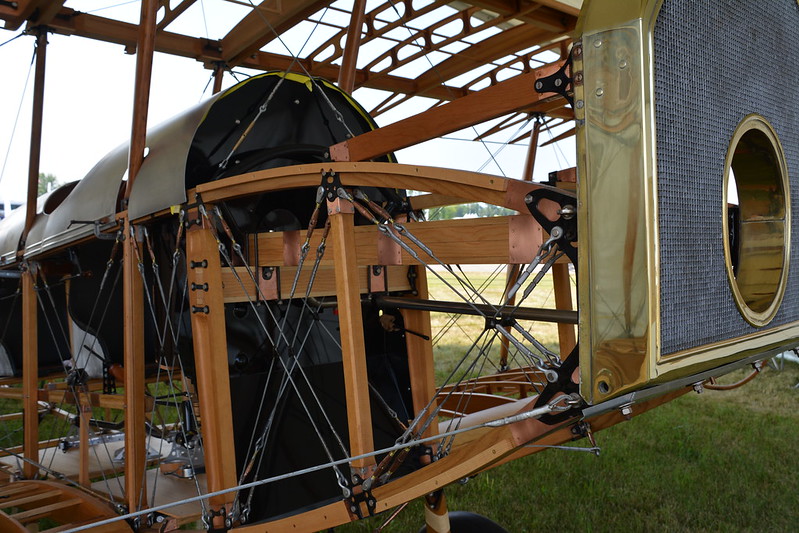Originally Posted by
Chombi1
The corrugations on the Ford Triplane and other planes from that era gave the fuselage and wings additional stiffness.
it might have resulted in less internal framing for tye plane = lighter.
Yep, it seems fairly obvious that the corrugations were for stiffness.
I had to look up the
Wiki page for the Trimotor to get the basics.... it was designed sometime before 1925, so I guess they were still figuring out the best ways to construct an all-metal aircraft. It looks like they hadn't figured out that they should be running the control cables inside the fuselage either.
The Ford Trimotor using all-metal construction was not a revolutionary concept, but it was certainly more advanced than the standard construction techniques of the 1920s. The aircraft resembled the
Fokker F.VII Trimotor (except for being all-metal which Henry Ford claimed made it "the safest airliner around").
[3] Its fuselage and wings followed a design pioneered by
Junkers[4] during World War I with the
Junkers J.I and used postwar in a series of airliners starting with the
Junkers F.13 low-wing monoplane of 1920 of which a number were exported to the US, the
Junkers K 16 high-wing airliner of 1921, and the
Junkers G 24 trimotor of 1924. All of these were constructed of
aluminum alloy, which was corrugated for added stiffness, although the resulting
drag reduced its overall performance.
This construction was a change from the old method of just putting cloth over the aircraft's framework. The old airframe construction was pretty fascinating all by itself... Wood beams to create a box-like frame skeleton with tensioned bracing wires running diagonally across the box elements. I saw a great display of a JN-4 "Jenny" biplane that showed off the construction. The cloth skin was gone, and the aircraft was displayed in a tent and labeled "Naked Jenny".




The amount of hand work involved in creating all of those structural elements must have been immense!
No idea of how many hammers were used in this type of construction (just to bring this back to the original topic, sorta).
Steve in Peoria